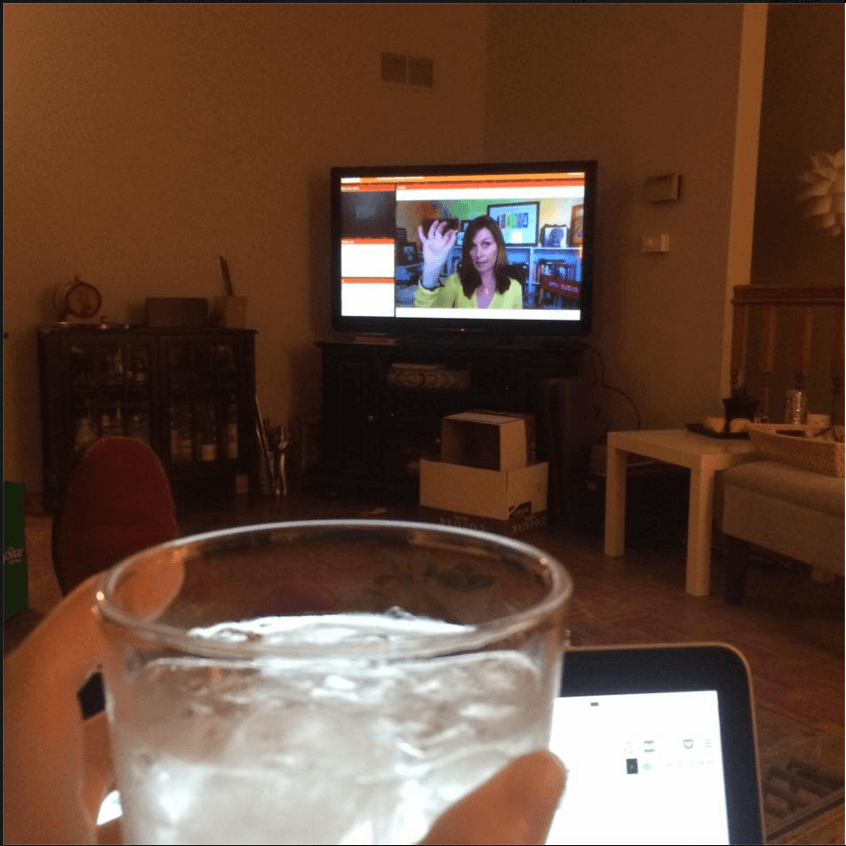We launched our online course, The Modern Blogging Masterclass, last week and holy cow! What a crazy few days it has been since then.
Though we’re only a quarter of the way through the course, I thought it would be interesting to blog about the lessons from each week, if only to have them to compile into an eBook later, but also to serve as a starting point for those of you who want to create an online course.
(Registration is closed so this isn’t a blog post to solicit more students.)
What You Think vs. What is Real
Having done webinars every month for years now, I know exactly what you want out of your free online professional development.
- It should be tactical, not based solely on theory.
- It should show you how to do something so you feel like it’s an hour well spent.
- It should be engaging and fun (the chat room is one of the best features).
- It should be something not everyone else is talking about.
- It should last no more than 45 minutes, with 15 minutes for Q&A.
I took all of this information into the first lesson and created a how-to video.
The video shows students how to create the first part of their content map and walks them through specifically what to do to find the right keywords, questions, and topics for their audiences.
Online Course Lessons
It is completely about the how, and not about the why or what.
I made a bad assumption that everyone was on the same page and understood why we want to build our content out this way, and I was wrong.
Questions began to flood in, everything from the screen is blurry in the video and “I can’t read what Gini is typing” to “I can’t figure out what I’m supposed to be doing” and “I’m completely overwhelmed!”
I’m not going to fix the last one because I want students overwhelmed. This means they are learning something new and are about to embark on something that is going to change the way they do content marketing forever. Also, I really enjoy submitting them to pain.
But what I’ve learned in the last four days is this:
- The live lessons should show the why and the what: Set the stage for the strategic reason you are doing this and give students some examples. A lecture, so to speak.
- There should be follow-up materials that have how-to videos (much shorter; four to six minutes each) that students can refer to as they do their homework.
- The course materials should include step-by-step directions. In some cases, you should end up with something similar to a textbook by the time you’re finished.
- Showing students how to do something on the screen via a webinar software does not work. You need to create slides with screenshots and use that instead.
- Just like any other course, you will have students who range from A to F; students who are super involved and others who don’t take the classes or do the homework.
- A private community is a very, very good thing and people will begin to help one another.
- When you make a statement about how much time a student will spend doing homework, multiply that by four. I said it would take two or three hours a week. I’m willing to bet some people could consider this their part-time job.
- This is not a monthly free webinar. The expectations are much, much higher and everything you’ve learned doing your webinars will be turned on its head.
- Definitely have someone on your team (or hire someone to help) who can focus on customer service. This is easily a part-time job during the course weeks and you won’t have time to do it yourself.
It’s easy for us to be flexible to the needs of the students in this group—and I’m sure I’ll learn more this Thursday that I haven’t yet considered—because we can create the live lectures around the feedback.
If that’s the biggest piece of advice I have for you, it’s this: Build your syllabus, create the follow-up materials, have a script for each live online course, build a private group, and mostly be flexible enough to change your live presentation on the fly.
You will get feedback you’re not expecting and it will be extremely important for you to respond in real-time so people know you are listening.
image credit: Kate Nolan, one of our students, who decided it was easier to throw me up on the big screen and drink through the lesson.
